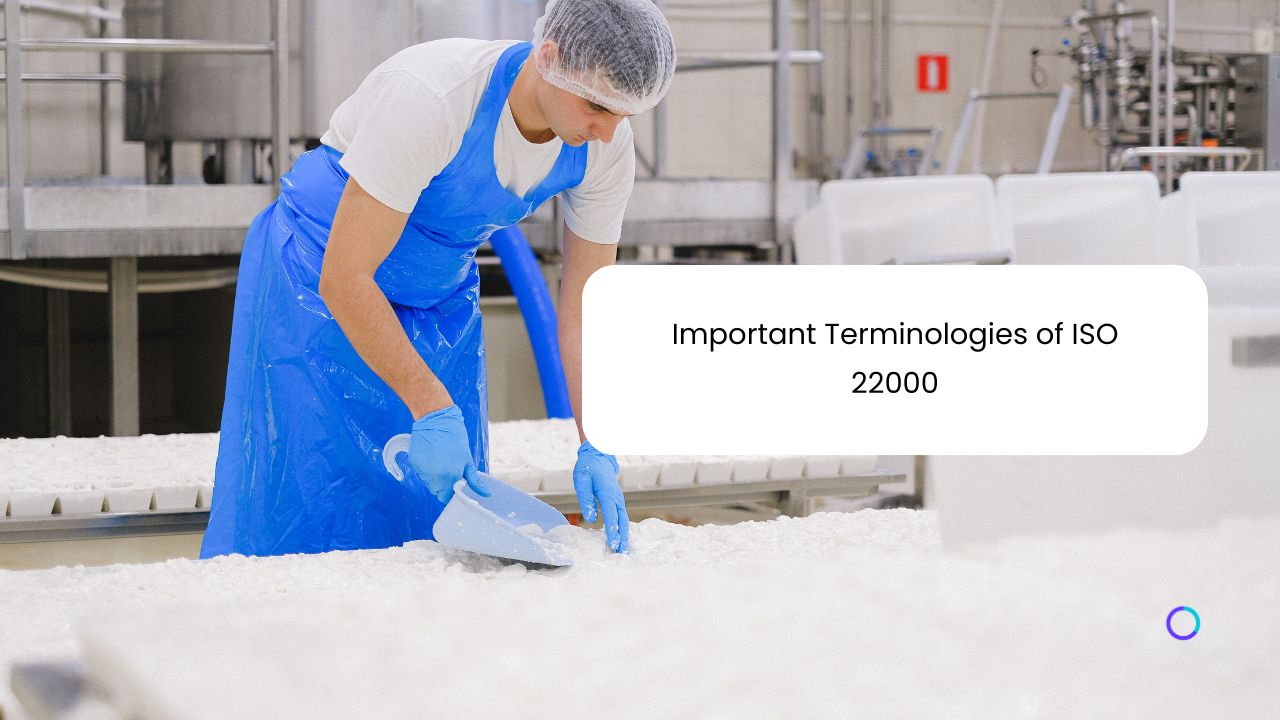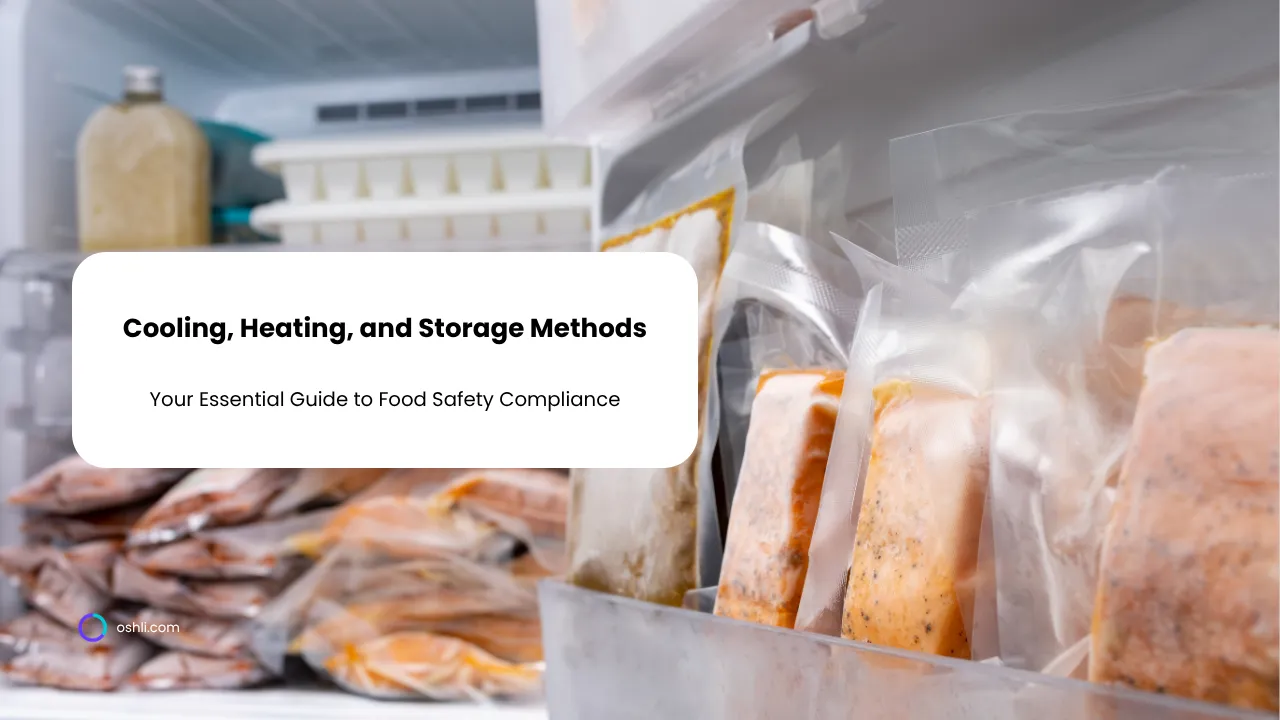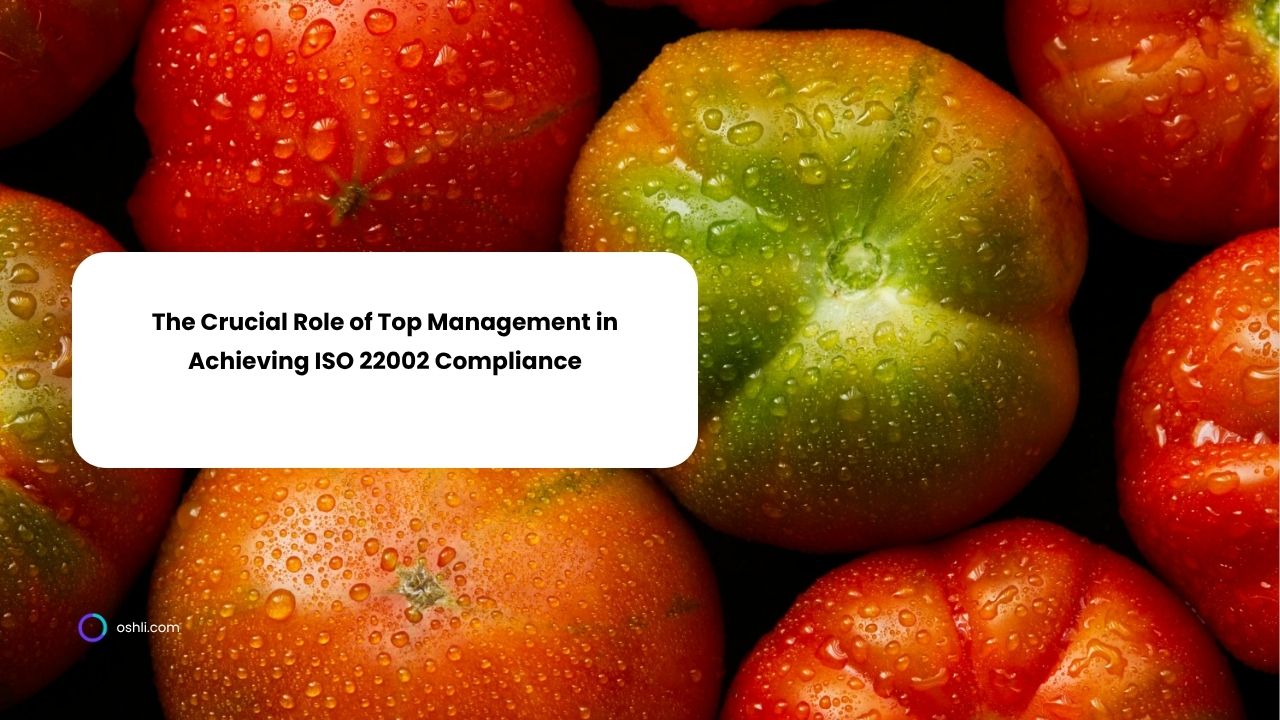
Important Terminologies of ISO 22000:2018
Table of Contents
- Introduction to ISO 22000:2018
- Understanding Food, Feed, Animal Food & End Product
- PRP, OPRP, Action Criterion, CCP, Critical Limit, and Validation
- Contamination, Lot, Traceability, and Food Safety Hazard
- Implementation of Terminologies in an FSMS
- Best Practices and Case Studies
- Conclusion
Introduction to ISO 22000:2018
In today’s globalized world, ensuring the safety and quality of food products is a critical priority for all stakeholders in the food chain. ISO 22000:2018, an international standard for Food Safety Management Systems (FSMS), provides a comprehensive framework to help organizations of all sizes manage food safety hazards and deliver safe end products. Published by the International Organization for Standardization (ISO), this standard incorporates best practices from across the food industry, blending elements of Hazard Analysis and Critical Control Points (HACCP) with the structure of the High-Level Structure (HLS) used in other ISO management system standards.
The core aim of ISO 22000:2018 is to help organizations prevent, eliminate, and reduce food safety hazards to an acceptable level, ensuring consumer protection and regulatory compliance. To achieve this, the standard introduces several important terminologies and concepts—some inherited from HACCP principles, others unique to the ISO approach. Understanding and correctly applying these terms is crucial for any organization that seeks to implement, maintain, or improve its Food Safety Management System.
In this article, we will explore the most significant terminologies found in ISO 22000:2018, including:
- Food, Feed, Animal Food & End Product
- PRP (Prerequisite Program), OPRP (Operational Prerequisite Program), Action Criterion, CCP (Critical Control Point), Critical Limit, and Validation
- Contamination, Lot, Traceability, Food Safety Hazard
By the end of this comprehensive guide, you will be equipped with a deeper understanding of these core terms and how they fit into an ISO 22000:2018-compliant Food Safety Management System. You will also learn best practices and practical tips for implementing these concepts effectively.
Understanding Food, Feed, Animal Food & End Product
1. Food
In the context of ISO 22000:2018, food is defined as any substance—processed, semi-processed, or raw—that is intended for human consumption. This definition encompasses not only the edible portions but also beverages, chewing gum, and any substances used in the manufacture, preparation, or treatment of food. It is important to note that food must be free from contamination and safe for human consumption.
Key Points: - Food includes all substances intended to be ingested by humans. - Must adhere to relevant safety and quality regulations. - A major focal point of any FSMS is ensuring that food remains safe throughout the supply chain.
2. Feed
Feed typically refers to products intended for animal consumption. These products can range from raw materials such as grains or soybeans to processed feeds like pellets, meals, or premixes designed to meet the nutritional requirements of livestock, poultry, or aquatic animals. While ISO 22000:2018 is primarily focused on food safety for human consumption, it also recognizes that animal feed plays a critical role in the overall food chain. Contaminated feed can lead to health issues in animals, which can then transfer to humans via meat, milk, or eggs.
Key Points: - Feed is any product intended for consumption by animals. - Contaminated feed can pose a serious risk to human food safety. - ISO 22000:2018 underscores the importance of controlling hazards throughout the entire food chain, including feed production.
3. Animal Food
Animal food can sometimes be used interchangeably with feed, but in certain contexts, animal food might refer to feed specifically prepared for companion animals (e.g., pet food). The distinction is subtle but can be relevant depending on the scope of your FSMS. While livestock feed is geared toward optimizing growth and productivity, pet food might have additional considerations such as palatability and packaging.
Key Points: - Animal food may encompass both livestock feed and pet food. - Safety standards apply similarly, though end-use contexts differ. - Proper labeling and traceability are crucial to avoid cross-contamination.
4. End Product
The end product in an ISO 22000:2018 context is the final output of a production or processing line that is intended for the consumer or customer. This could be a finished product like canned vegetables, packaged meat, dairy products, or even ready-to-eat meals. The safety and quality of the end product are paramount, and every step in the production process must be controlled to ensure the final product meets food safety requirements.
Key Points: - The end product is what eventually reaches the consumer. - Must meet regulatory and safety specifications. - Often tested for compliance with critical limits and quality standards.
Understanding these fundamental definitions is essential for any food safety professional. Properly distinguishing among food, feed, animal food, and end product allows an organization to define the scope of its FSMS accurately and implement the correct controls at each stage of the supply chain.
PRP, OPRP, Action Criterion, CCP, Critical Limit, and Validation
ISO 22000:2018 builds upon the HACCP approach while adding its unique framework and terminology. Prerequisite Programs (PRPs) and Operational Prerequisite Programs (OPRPs) form the foundation upon which Critical Control Points (CCPs) are identified and managed. Let’s break down each of these terms and see how they relate to one another.
1. PRP (Prerequisite Program)
A Prerequisite Program (PRP) encompasses the basic conditions and activities that are necessary to maintain a hygienic environment throughout the food chain. PRPs are not specific to individual hazards but rather address broader environmental and operational conditions. Examples of PRPs include:
- Good Hygiene Practices (GHP)
- Good Manufacturing Practices (GMP)
- Maintenance of facilities and equipment
- Supplier management and control
- Pest control
- Waste management
- Training and competency programs
PRPs are the foundational elements that create the environment in which safe food can be produced. They help minimize the likelihood of introducing food safety hazards in the first place.
Key Points: - PRPs establish basic conditions necessary for safe food production. - They are general in nature, applying to the facility and operational environment as a whole. - They form the groundwork for more specific hazard controls.
2. OPRP (Operational Prerequisite Program)
An Operational Prerequisite Program (OPRP) is a control measure or combination of control measures applied to prevent or reduce a significant food safety hazard to acceptable levels. Unlike PRPs, OPRPs are more specific and often focus on particular steps in the production process where hazards are significant but do not necessarily meet the criteria for a CCP.
Example:
- A metal detector in a production line could be classified as an OPRP if metal contamination is a significant hazard but is not classified as a CCP (depending on the organization’s hazard analysis).
OPRPs require monitoring and verification, but the level of control and documentation may be slightly less stringent compared to a CCP. However, they are still critical to maintaining food safety.
Key Points: - OPRPs target specific hazards identified as significant during hazard analysis. - They require monitoring but may have different control criteria than CCPs. - They bridge the gap between broad PRPs and the strict controls of CCPs.
3. Action Criterion
Within ISO 22000:2018, the term Action Criterion refers to a measurable or observable specification for the control of an OPRP. It indicates the threshold or parameter that needs to be met to ensure the OPRP effectively controls the identified hazard.
For instance, if you have an OPRP to reduce microbial contamination by applying a certain sanitizer, the Action Criterion could be the contact time and concentration of the sanitizer. Monitoring this ensures that the OPRP is functioning correctly.
Key Points: - Action Criteria are used to ensure OPRPs are effectively implemented. - They must be measurable or observable. - They act as triggers for corrective actions if not met.
4. CCP (Critical Control Point)
A Critical Control Point (CCP) is a step at which control can be applied and is essential to prevent or eliminate a food safety hazard or reduce it to an acceptable level. CCPs typically come with Critical Limits, which are non-negotiable values that must be met to ensure food safety. If a critical limit is exceeded or not met, the product is considered potentially unsafe, and immediate corrective actions are required.
Examples of CCPs: - Cooking temperatures/time for poultry products to eliminate Salmonella. - Pasteurization temperatures/time for milk.
CCPs are often determined through a hazard analysis that evaluates the likelihood and severity of hazards at each stage of the process. Once a step is identified as critical for controlling a hazard, it is designated as a CCP.
Key Points: - CCPs are essential steps that prevent, eliminate, or reduce hazards. - They come with strict monitoring and documentation requirements. - Exceeding or not meeting a critical limit necessitates immediate corrective action.
5. Critical Limit
A Critical Limit is a criterion that separates acceptability from unacceptability at a CCP. It is typically based on scientific data and regulatory requirements. Critical limits can be time, temperature, pH, water activity, or any other measurable parameter that ensures the hazard is controlled.
Key Points: - Critical Limits are tied to CCPs. - They must be measurable or observable (e.g., temperature of 72°C for 15 seconds). - Failure to meet critical limits indicates a high risk of product contamination.
6. Validation
Validation in the context of ISO 22000:2018 refers to the process of obtaining evidence that a control measure (or combination of measures) is capable of effectively controlling the hazard to achieve the intended outcome. This is typically done before the control measure is implemented or whenever changes are made that could impact its effectiveness.
Key Points: - Validation provides scientific or technical proof that a control measure works. - Often involves testing, scientific literature, or regulatory guidelines. - Critical for ensuring CCPs, OPRPs, and their limits are robust and reliable.
Contamination, Lot, Traceability, and Food Safety Hazard
The following terms deal with the identification and management of potential risks within the food chain and how to track and handle products effectively.
1. Contamination
Contamination refers to the presence or introduction of a food safety hazard in a product or environment. Hazards can be biological (e.g., bacteria, viruses, parasites), chemical (e.g., pesticides, allergens, cleaning agents), or physical (e.g., metal fragments, glass shards). Contamination can occur at any stage of the food chain—from raw materials and production processes to packaging and distribution.
Key Points: - Preventing contamination is a core objective of any FSMS. - It can be cross-contamination (transfer from one product to another) or direct contamination (introduction from an external source). - Effective PRPs, OPRPs, and CCPs aim to prevent or control contamination risks.
2. Lot
A lot is a defined quantity of a product that is produced under essentially the same conditions during a specific time interval. The concept of a lot is crucial for traceability and recall procedures. If a food safety issue is detected, being able to isolate which lot is affected enables organizations to minimize the scope of recalls and reduce economic and reputational damage.
Key Points: - Lots facilitate traceability throughout the supply chain. - Proper identification of lots is vital for effective recall management. - Clearly defined lot numbers help quickly identify and contain affected products.
3. Traceability
Traceability is the ability to follow the movement of a food product (or ingredient) through specified stages of production, processing, and distribution. ISO 22000:2018 emphasizes the importance of traceability as a tool for food safety and consumer protection. A robust traceability system allows for rapid identification of potential issues, efficient recalls, and accurate information for regulators and consumers.
Key Points: - Involves both internal traceability (within a facility) and external traceability (throughout the supply chain). - Technologies like barcoding, RFID, and digital databases are commonly used. - Essential for compliance with regulatory requirements and consumer trust.
4. Food Safety Hazard
A food safety hazard is any biological, chemical, or physical agent in food that has the potential to cause adverse health effects when consumed. Identifying food safety hazards is the first step in a hazard analysis, which in turn guides the development of PRPs, OPRPs, and CCPs.
Key Points: - Hazards can be biological (bacteria, viruses, parasites), chemical (toxins, pesticides, allergens), or physical (metal shards, plastic, glass). - Severity and likelihood determine which hazards are significant. - Proper hazard analysis underpins effective control measures.
Implementation of Terminologies in an FSMS
Having explored the key terminologies—Food, Feed, Animal Food, End Product, PRP, OPRP, Action Criterion, CCP, Critical Limit, Validation, Contamination, Lot, Traceability, and Food Safety Hazard—let’s discuss how these concepts integrate within an ISO 22000:2018-compliant Food Safety Management System (FSMS).
1. Scoping the FSMS
Before implementing ISO 22000:2018, an organization must define the scope of its FSMS. This includes identifying: - Products and services: Whether the organization deals with food, feed, animal food, or all three. - Processes and operations: From raw material sourcing to final product distribution. - Regulatory requirements: Understanding local, national, and international regulations related to food safety.
By clearly defining the scope, the organization can accurately identify PRPs, OPRPs, and CCPs and ensure all relevant processes are covered.
2. Conducting Hazard Analysis
Hazard analysis is the cornerstone of ISO 22000:2018. It involves: 1. Identifying potential hazards (biological, chemical, and physical). 2. Evaluating the likelihood and severity of each hazard. 3. Determining which hazards are significant and require control measures.
During hazard analysis, you will categorize control measures into PRPs, OPRPs, or CCPs based on their role in controlling significant hazards. Action Criteria and Critical Limits are then established for OPRPs and CCPs, respectively.
3. Establishing PRPs and OPRPs
PRPs form the general foundation for hygiene and operational conditions. This could include: - Cleaning and sanitation protocols. - Personnel hygiene standards. - Infrastructure maintenance (e.g., facility design, equipment upkeep). - Supplier approval programs.
OPRPs are more targeted measures that specifically address hazards identified as significant but not critical enough to be a CCP. Examples include: - Temperature controls for raw material storage. - Allergen segregation protocols. - Metal detection procedures (if deemed an OPRP after hazard analysis).
Each OPRP should have an Action Criterion, a measurable or observable specification that ensures the hazard remains under control.
4. Defining CCPs and Critical Limits
Once a step is identified as a CCP, it must be accompanied by a Critical Limit—a value or set of values that separate acceptable from unacceptable. For example: - Cooking poultry to a minimum internal temperature of 74°C (165°F). - Pasteurizing milk at 72°C for 15 seconds.
These Critical Limits must be validated to ensure they effectively control the hazard. Monitoring procedures should be clearly defined (e.g., frequency of temperature checks, who is responsible, how data is recorded).
5. Monitoring, Verification, and Validation
- Monitoring involves checking PRPs, OPRPs, and CCPs at scheduled intervals to ensure they are functioning correctly.
- Verification ensures that the FSMS is operating as intended. This could involve internal audits, external audits, or reviewing records to confirm compliance with standards and procedures.
- Validation is the pre-implementation or post-change step to confirm that a control measure or combination of measures effectively controls the hazard to the required level.
6. Managing Contamination Risks
To mitigate contamination risks, organizations must implement measures at every stage: - Preventive measures: Proper facility design, hygienic equipment, well-trained personnel. - Detection measures: Sampling and testing (microbiological, chemical, physical). - Corrective actions: Immediate isolation of contaminated lots, thorough cleaning, and root cause analysis to prevent recurrence.
7. Lot Identification and Traceability Systems
Lot identification and traceability are critical for managing product recalls and ensuring food safety. Best practices include: - Assigning unique lot numbers based on production date, batch, or shift. - Maintaining comprehensive records of raw materials, processing parameters, and distribution details. - Implementing technology solutions (e.g., ERP systems, barcode/RFID scanning) to track products from farm to fork.
8. Continuous Improvement
An FSMS is not a one-time implementation; it requires continuous improvement. Organizations should: - Review non-conformities and corrective actions regularly. - Conduct internal and external audits to identify areas for improvement. - Stay updated with regulatory changes and industry best practices. - Encourage a culture of food safety awareness at all organizational levels.
Best Practices and Case Studies
1. Case Study: Dairy Processing Plant
A medium-sized dairy processing plant sought ISO 22000:2018 certification to streamline its Food Safety Management System. Here’s how they implemented the terminologies discussed:
- Scope Definition: Included raw milk collection, pasteurization, packaging, and distribution of dairy products (milk, cheese, yogurt).
- PRPs: Focused on equipment hygiene, staff training, and pest control to ensure a clean environment.
- OPRP: Installation of a metal detector in the packaging line to catch any physical contaminants. The Action Criterion was set to detect any metal particles above 1.5 mm.
- CCP: Pasteurization step. A Critical Limit was set at 72°C for 15 seconds.
- Validation: Scientific literature and regulatory guidelines supported the effectiveness of pasteurization at 72°C/15s to eliminate pathogens like Listeria and Salmonella.
- Traceability: Each batch of pasteurized milk was assigned a unique lot number, ensuring quick recalls if contamination was suspected.
The plant successfully achieved ISO 22000:2018 certification, reporting reduced product rejections, improved customer confidence, and better overall operational efficiency.
2. Case Study: Pet Food Manufacturer
A pet food manufacturer producing both wet and dry feeds for companion animals decided to implement ISO 22000:2018 to align with global best practices:
- Scope Definition: Covered procurement of raw materials (meat, grains), production, packaging, and distribution of wet and dry pet foods.
- Hazard Analysis: Identified potential hazards such as chemical residues in meat and mycotoxins in grains.
- PRPs: Comprehensive supplier approval process to ensure raw materials meet safety standards.
- OPRPs: Testing for mycotoxins in incoming grains. Action Criterion set for acceptable levels based on regulatory limits.
- CCP: Final sterilization of canned wet food. Critical Limit established (temperature and time) to eliminate spore-forming bacteria.
- Traceability: Implementation of RFID tagging for each batch to track distribution channels.
The ISO 22000:2018 certification enhanced the company’s reputation, opened new markets, and reassured customers about the safety of their pet food products.
Conclusion
ISO 22000:2018 is a powerful standard that integrates HACCP principles with the High-Level Structure used in other ISO management systems. By understanding and correctly applying its key terminologies—Food, Feed, Animal Food, End Product, PRP, OPRP, Action Criterion, CCP, Critical Limit, Validation, Contamination, Lot, Traceability, and Food Safety Hazard—organizations can build a robust FSMS that effectively manages risks, ensures regulatory compliance, and fosters consumer trust.
Key Takeaways:
- A well-defined FSMS scope ensures all relevant products and processes are covered.
- Hazard analysis is the foundation for identifying significant risks and categorizing them into PRPs, OPRPs, and CCPs.
- Action Criteria and Critical Limits are crucial to ensure control measures are both effective and measurable.
- Validation of control measures ensures they achieve the desired level of hazard control.
- Traceability and lot identification are indispensable for managing recalls and maintaining consumer trust.
- Continuous improvement and regular audits keep the FSMS up to date and effective against emerging threats.
By meticulously implementing these terminologies and concepts, organizations not only achieve ISO 22000:2018 certification but also contribute to the broader goal of global food safety.
Join our newsletter!
Enter your email to receive our latest news.
Don't worry, we don't spam
Related Articles

Guide to Developing a Professional Checklist for ISO 45001 Diagnostic Audits
The ISO 45001 standard establishes a framework for Occupational Health and Safety Management Systems (OHSMS), aiming to enhance employee safety, reduce workplace risks, and create safer working conditions. A diagnostic audit aligned with ISO 45001 is a proactive approach that allows organizations to assess current compliance, identify weaknesses, and prioritize improvements. Central to this process is a professionally structured checklist that ensures consistency, accuracy, and depth in audit execution.

Cooling, Heating, and Storage Methods: Your Essential Guide
Discover how to create a cooling, heating, and storage methods template to ensure food safety, meet compliance, and optimize temperature control with free templates.

The Crucial Role of Top Management in Achieving ISO 22002 Compliance
Explore how top management's leadership drives ISO 22002 compliance, ensuring robust food safety management through commitment, policy, and oversight.


